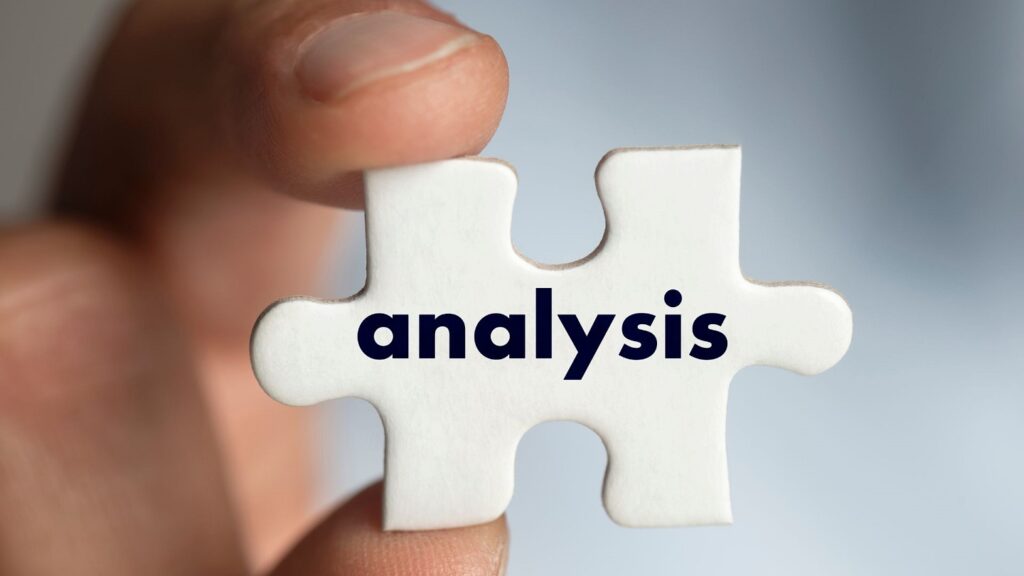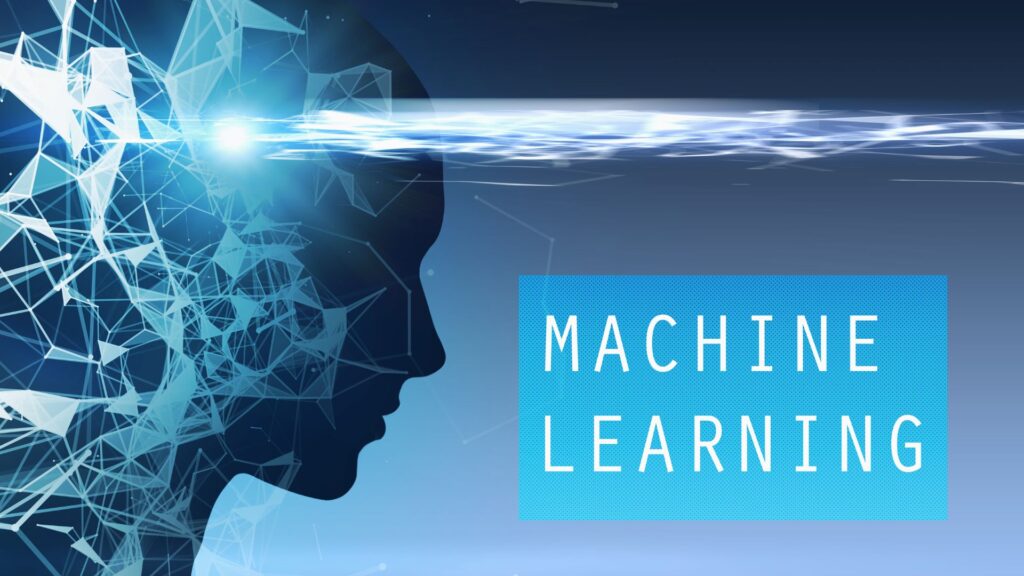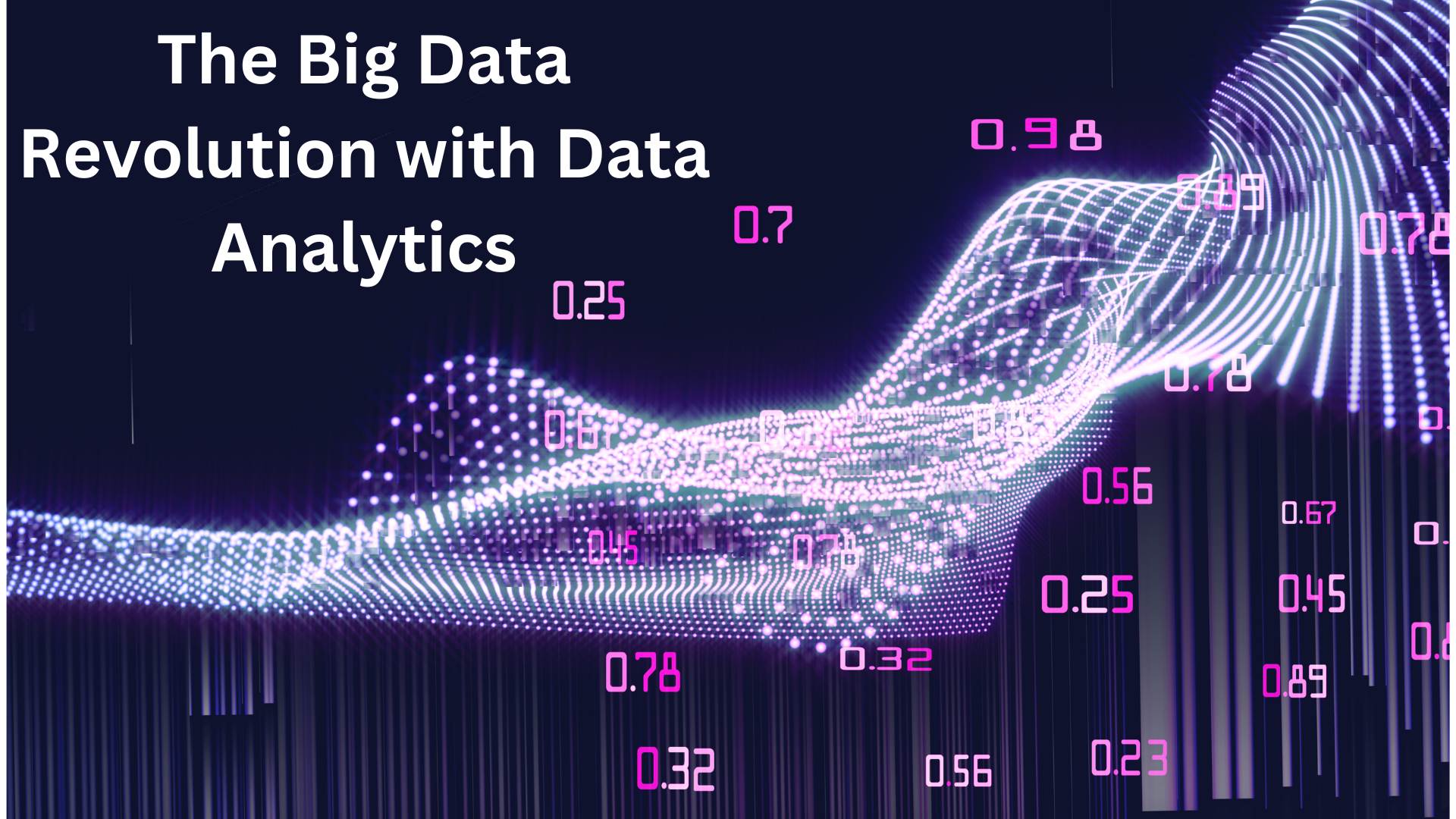The Big Data Revolution with Data Analytics
Big data refers to extremely large and diverse collections of structured, unstructured, and semi-structured data that continue to grow exponentially over time. It is characterized by the three Vs: volume, velocity, and variety. Volume refers to the amount of data, velocity refers to the speed at which data is generated and processed, and variety refers to the different types of data, including structured, semi-structured, and unstructured data. Big data can be analyzed for insights that improve decisions and give confidence for making strategic business moves. Big data can help organizations to identify patterns, trends, and insights that can be used to improve business operations, customer experiences, and decision-making processes. It can also help organizations to identify new opportunities for growth and innovation.
The world is awash in data, and businesses are increasingly recognizing the value of this vast resource. Big data, which refers to the massive and complex datasets that are too large to be processed by traditional methods, holds the key to unlocking new insights and opportunities. Data analytics, the process of extracting meaningful information from big data, is the engine that drives this revolution.
Imagine the world as a vast library, filled with books on every imaginable topic. Each book represents a piece of data, and the library as a whole represents the vast sea of data that exists in our world today. This is what we call “big data.”
But just as a library without librarians would be useless, big data without data analytics would be nothing more than a pile of information. Data analytics is like the librarian, the expert who can sift through the mountains of data, organize it, and extract meaningful insights.
Table of Contents
ToggleData Analytics: The Unsung Hero of Our Time
the Supermarket Detective
Imagine you’re a supermarket manager, your store is bustling with activity, and shelves are lined with products. But behind the scenes, you’re facing a challenge: understanding which products are selling well and which ones are just taking up space. That’s where data analytics comes in, acting as your very own supermarket detective.
Data analysts can sift through your sales data, customer behavior, and market trends like a seasoned detective examining clues at a crime scene. They’ll uncover hidden patterns, identify popular items, and predict future demand. With these insights, you can:
- Stock up on the right products, ensuring your customers always have what they’re looking for.
- Avoid overstocking slow-moving items, saving valuable shelf space and reducing inventory costs.
- Make informed pricing decisions, optimizing profits and customer satisfaction.
The Netflix Recommendation Guru
Ever wondered how Netflix knows that romantic comedy you watched last night is exactly the kind of movie you’re in the mood for today? It’s not magic, it’s data analytics, your very own Netflix recommendation guru.
Netflix collects a massive amount of data about your viewing habits, analyzing every pause, rewind, and skip. Data analysts use this information to create a personalized profile of your viewing preferences, like a detective building a psychological profile of a criminal.
- With this profile in hand, they can:
- Recommend movies and shows that align with your tastes and interests.
- Suggest new genres and hidden gems you might not have discovered on your own.
- Keep you engaged and entertained, increasing your satisfaction and loyalty to Netflix.
The Fraud-Fighting Bank
In the world of finance, fraudsters are like cunning spies, constantly trying to infiltrate and steal money. But data analytics is the ultimate counterintelligence weapon, your very own fraud-fighting bank.
Data analysts can analyze vast amounts of financial transactions, scrutinizing every purchase, transfer, and withdrawal like a detective examining fingerprints at a crime scene. They’ll identify unusual patterns or anomalies that might indicate fraudulent activity.
With these insights, they can:
- Detect fraudulent transactions in real-time, preventing financial losses and protecting customer accounts.
- Identify potential fraudsters and take proactive measures to prevent future attacks.
- Safeguard the integrity of the financial system and build trust among customers.
The Traffic-Taming City Planner
Ever felt trapped in a sea of cars, navigating through a city choked with traffic congestion? Data analytics is the key to untangling this mess, your very own traffic-taming city planner.
Data analysts can analyze traffic patterns, sensor readings, and travel behavior like a detective investigating a complex traffic accident. They’ll identify bottlenecks, optimize traffic signals, and suggest alternative routes.
With these insights, they can:
- Reduce traffic congestion, saving commuters time and fuel.
- Improve travel times, making cities more livable and businesses more accessible.
- Plan for future infrastructure needs, ensuring smooth traffic flow as cities grow.
The Disease-Detecting Doctor
In the fight against disease, data analytics is the ultimate diagnostic tool, your very own disease-detecting doctor.
Doctors can analyze medical records, patient data, and genetic information like a detective examining a patient’s medical history. They’ll identify patterns and correlations that might indicate underlying diseases or potential health risks.
With these insights, they can:
- Diagnose diseases more accurately and efficiently, providing timely and effective treatment.
- Develop personalized treatment plans tailored to each patient’s unique genetic makeup and medical history.
- Predict and prevent potential health risks, promoting preventive care and improving overall health outcomes.
These examples illustrate how data analytics is transforming our lives in countless ways. It’s not just about numbers and spreadsheets; it’s about using data to make a difference, solve problems, and improve the world around us. Data analytics is the detective, the guru, the fraud-fighter, the traffic-tamer, and the disease-detector, working tirelessly behind the scenes to make our lives better.

Data Analytics: A Journey of Discovery
Imagine you’re an archaeologist, uncovering hidden treasures buried beneath layers of dust and time. Data analytics is like your very own archaeological tool, unearthing valuable insights from the vast troves of data that surround us.
In recent years, data analytics has made remarkable strides, opening up new frontiers in understanding and utilizing data. Let’s delve into some of these exciting discoveries and advancements, presented in a way that even the most data-savvy layman can appreciate:
1. XAI: Unlocking the Mysteries of AI Decisions
Have you ever wondered how AI makes its decisions? Sometimes, even the creators of AI models struggle to explain their inner workings. That’s where Explainable AI (XAI) comes in, like a translator bridging the gap between AI and human understanding.
XAI techniques are like having a magnifying glass for AI models, allowing us to see how they arrive at their conclusions. This newfound transparency is crucial for ensuring that AI decisions are fair, unbiased, and accountable.
2. Federated Learning: Keeping Data Privacy in the Spotlight
In today’s data-driven world, privacy concerns are paramount. Federated learning is like a privacy-preserving cloak for data analytics, enabling researchers and organizations to collaborate on training machine learning models without sharing sensitive data.
Imagine multiple hospitals working together to improve disease detection algorithms without sharing their patient records directly. Federated learning makes this possible, allowing researchers to harness the power of collective data while safeguarding individual privacy.
3. Real-Time Analytics: Capturing the Pulse of Data
Data is like a river, constantly flowing and evolving. Real-time analytics is like a dam that captures this dynamic flow, providing insights into data as it happens.
Imagine fraud detection systems that can identify and flag suspicious transactions in real time, saving banks millions of dollars. Or traffic management systems that can adjust traffic signals based on real-time traffic patterns, reducing congestion and improving commute times.
4. Edge Computing: Data Analytics at the Forefront
Edge computing is like bringing the power of data analytics closer to the action, where data is generated. It’s like having a mini data center embedded in devices and sensors, crunching numbers right at the source.
Imagine sensors in industrial machinery analyzing data in real time, predicting equipment failures before they occur. Or smart home devices optimizing energy consumption based on real-time usage patterns.
5. Graph Analytics: Navigating the Complexities of Relationships
Data isn’t always a straightforward list of numbers; it can be a network of interconnected entities, like a tangled web of relationships. Graph analytics is like a powerful microscope for these complex data structures, allowing us to identify patterns and connections that would otherwise remain hidden.
Imagine social media platforms using graph analytics to understand how information spreads and how communities form. Or supply chain managers using graph analytics to optimize logistics and identify potential disruptions.
6. DataOps: Bridging the Divide Between Data and Operations
DataOps is like a bridge connecting data teams, development teams, and operations teams, ensuring that data is seamlessly flowing and being used effectively throughout the organization.
Imagine a company where data is not siloed in isolated departments but is readily accessible and integrated into decision-making processes at all levels. DataOps makes this possible, fostering a culture of collaboration and data-driven decision-making.
7. AutoML: Democratizing Machine Learning
Machine learning has revolutionized many industries, but building and training machine learning models can be complex and time-consuming. AutoML is like a helping hand, making machine learning more accessible to a wider range of users.
Imagine non-experts being able to build and train machine learning models with just a few clicks. AutoML is making this a reality, empowering individuals to harness the power of machine learning without extensive technical expertise.
8. NLP: Decoding the Language of Humans
Data isn’t always numbers and figures; it can be the rich tapestry of human language. Natural Language Processing (NLP) is like a universal translator, enabling computers to understand and process the nuances of human language.
Imagine customer service chatbots that can provide personalized support, understanding the sentiment and intent behind customer queries. Or social media analysis tools that can extract valuable insights from public conversations, revealing trends and opinions.
These new discoveries and advancements in data analytics are just the beginning of an exciting journey. As data continues to grow and evolve, data analytics will play an increasingly crucial role in shaping our world, providing insights that will transform businesses, industries, and society as a whole

the future of data analytics in India from reports:
The Indian Data Analytics Market is Expected to Reach $36.6 Billion by 2027:
According to a report by Market Research Future, the Indian data analytics market is expected to reach $36.6 billion by 2027, growing at a CAGR of 18.7% from 2022 to 2027. This growth is being driven by factors such as the increasing adoption of data-driven decision-making in Indian businesses, the government’s focus on promoting data analytics, and the growing demand for skilled data analytics professionals.
2. The Demand for Data Analytics Professionals in India is Expected to Grow by 35% by 2025:
A report by NASSCOM and SkillsCircle found that the demand for data analytics professionals in India is expected to grow by 35% by 2025. This means that there will be a significant need for data analytics professionals in the coming years.
3. The Indian Government is Actively Promoting Data Analytics:
The Indian government is actively promoting data analytics through initiatives such as the National Data Policy and the National Artificial Intelligence Strategy. These initiatives are aimed at creating a data-driven economy and fostering innovation in the field of data analytics.
4. India’s IT Industry is a Major Driver of Data Analytics Growth:
India’s IT industry is a major driver of data analytics growth. The country has a large pool of skilled IT professionals who are able to develop and implement data analytics solutions.
5. India is Emerging as a Global Data Analytics Hub:
India is emerging as a global data analytics hub, with several data analytics startups emerging in recent years. These startups are developing innovative solutions for various industries, such as healthcare, finance, and retail.
6. India is Focusing on Data Privacy and Security:
The Indian government is taking steps to ensure data privacy and security in the country. The Personal Data Protection Bill (PDP Bill), which is currently under consideration, aims to regulate the collection, use, and storage of personal data.
7. India is Participating in Global Data Analytics Initiatives:
India is actively participating in global data analytics initiatives, such as the Global Partnership on Artificial Intelligence (GPAI) and the Open Data Institute (ODI). This collaboration is helping India to stay up-to-date with the latest advancements in data analytics and share best practices with other countries.
8. Data Analytics is Playing a Crucial Role in India’s COVID-19 Response:
Data analytics is playing a crucial role in India’s COVID-19 response. Data is being used to track the spread of the virus, identify hotspots, and develop targeted interventions.
Overall, India is well-positioned to play a leading role in the future of data analytics. The country’s strong IT industry, growing demand for data analytics professionals, and government initiatives are all creating a favorable environment for the development and adoption of data analytics solutions.
AUTOMATION IN JOBS AND DATA ANALYTICS
Yes, it is true that automation is likely to play an increasing role in data science and analytics in the future. Many data science and analytics tasks, such as data cleaning, data preparation, and feature engineering, can be automated using machine learning and artificial intelligence. This will free up data scientists and analysts to focus on more creative and strategic tasks, such as developing predictive models and generating insights from data.
However, automation is not likely to replace the need for human data scientists and analysts. Data scientists and analysts will still be needed to:
- Understand the business context and objectives of data analytics projects.
- Collect and curate the right data for the project.
- Interpret the results of data analysis and communicate them to stakeholders.
- Develop and implement data governance and privacy policies.
- In addition, data scientists and analysts will need to stay up-to-date on the latest advancements in machine learning and artificial intelligence in order to effectively use these technologies to automate tasks.
Overall, the automation of data science and analytics tasks is likely to have a positive impact on the field. It will free up data scientists and analysts to focus on more strategic tasks, and it will make data analytics more accessible to a wider range of users. However, it is important to remember that automation is not a replacement for human expertise. Data scientists and analysts will still be needed to provide the context, interpretation, and leadership that is essential for successful data analytics projects.
Here are some specific examples of how automation is being used in data science and analytics:
- Data cleaning and preparation: Machine learning algorithms can be used to automatically identify and correct errors in data, such as missing values and outliers.
- Feature engineering: Machine learning algorithms can be used to automatically generate new features from existing data. This can be helpful for improving the performance of predictive models.
- Model development and selection: Machine learning algorithms can be used to automatically develop and select predictive models. This can save time and effort for data scientists and analysts.
- Model deployment and monitoring: Machine learning models can be automatically deployed to production and monitored for performance. This can help to ensure that models are performing as expected and are not generating biased or unfair results.
Overall, automation is a powerful tool that can be used to improve the efficiency and effectiveness of data science and analytics. However, it is important to use automation responsibly and to ensure that it is not used to replace human judgment and expertise.

